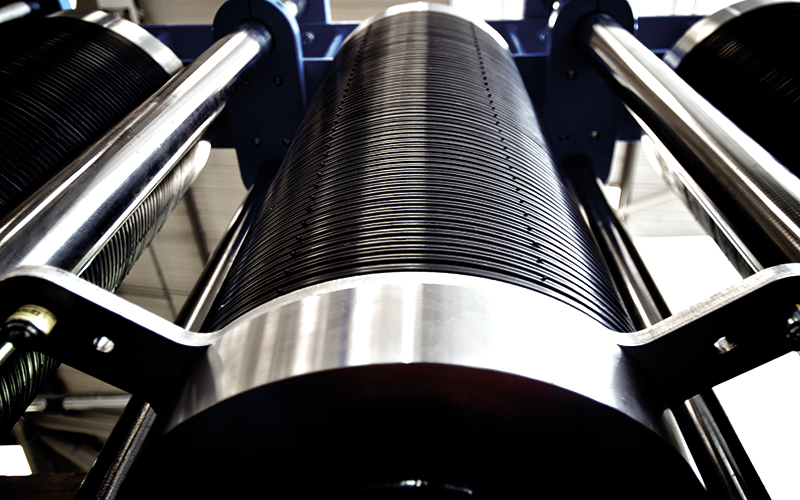Making the move to a hydrogen economy
Paul Dodds at University College London and Nigel Holmes at the Scottish Hydrogen and Fuel Cell Association ask: could hydrogen hold the key to decarbonising heat and transport?

The term ‘hydrogen economy’ was coined in the 1970s, when hydrogen was seen as the key to a more secure energy system with less reliance on fossil fuels. It is now often viewed through the climate change lens – other than electricity, hydrogen is the only zero-carbon energy carrier that is under serious consideration for use across low-carbon energy systems.
Hype leads to innovation
In the 1990s, hydrogen-powered fuel cell electric vehicles (FCEVs) received substantial investment, leading to a ‘hype cycle’ that peaked around 2004. They gradually left the spotlight as commercial vehicles did not appear and battery electric vehicles were commercialised.
Yet development of FCEVs has continued in the background, and Hyundai launched the first production-line cars in Korea in 2015. FCEVs today are all hybrids with on-board battery storage, but have the advantage of longer ranges and much shorter refuelling time than battery-only vehicles.
Green energy carrier of the future?
During the past few years, the move towards inflexible wind and solar generation has caused concern about excess electricity generation being wasted. One option is to use this excess to produce hydrogen using an electrolyser. Systems are being tested in Germany and on Orkney, with the hydrogen either injected into the local gas network or used to power vehicles.
There is also interest in whether hydrogen could replace natural gas for heating UK homes. Heat pumps, the preferred low-carbon option until 2013, are now considered unsuitable: they are larger and more expensive than boilers, and require a water tank and a well-insulated building. UK householders are accustomed to small, quiet, reliable, responsive, low-cost and high-power natural gas boilers, and hydrogen boilers would have similar characteristics.
Scotland’s ambitions and progress
Hydrogen is now recognised in the new Scottish Energy Strategy and Climate Plan as being key to delivering Scotland’s ambitions for reducing greenhouse gas emissions and supporting the growth of local smart energy clusters. The use of hydrogen complements other vectors such as electricity, and the innovative ‘Surf n Turf’ and ‘BIG HIT’ (Building Innovative Green Hydrogen systems in an Isolated Territory) smart energy demonstrator projects in the Orkney Islands are now recognised as a global exemplar for clean energy islands.
These early deployments in Scotland provide valuable insights on quantifying the economic value added from local hydrogen supply in low-carbon energy and
transport applications, and can be used to identify the opportunities for scale-up and wider replication.
Specific opportunities from local use of hydrogen include the integration of high levels of intermittent renewables such as tidal and wind into the energy system using electrolysis, together with ‘sector coupling’ to make best use of the low-carbon energy
in remote areas of Scotland.
Is hydrogen affordable?
A key question is whether low-carbon hydrogen could be produced at an affordable price. Hydrogen can be produced from gas, oil, coal, biomass or electricity. The cheapest option at present for hydrogen production at scale is steam-methane reforming (SMR) of natural gas, which is used by UK industry to generate hydrogen for ammonia production and oil refining. A feasibility study1 on converting Leeds to hydrogen also proposed to use natural gas as a feedstock for SMR, but to capture and sequester most of the CO2. SMR with carbon capture and storage (CCS) produces ‘blue’ hydrogen with a low-carbon footprint. Producing low-carbon ‘green’ hydrogen by electrolysis using renewable electricity is considered to be a more sustainable approach, but in the near-term is more expensive than reforming natural gas.
Cost continues to be a key challenge, as hydrogen cannot yet compete commercially with fossil fuels in the absence of a carbon tax. For areas such as heating, where fuel poverty is a key policy concern, all low-carbon technologies raise affordability issues. Another challenge is the ‘chicken-and-egg’ problem of hydrogen supply infrastructure – investments cannot be justified without demand, but demand is dependent on infrastructure already being in place.
There are a number of UK and European initiatives to test and deploy early hydrogen systems, and encourage nascent markets. For example, the UK government is investing £25m to understand the engineering challenges of hydrogen for heating and £20m in technologies to create low-carbon hydrogen, while European projects have subsidised early infrastructure deployment.
Hydrogen: hype or hope?
Hydrogen technologies are key to the development of our future energy systems. Visit our new microsite energyfocus.the-eic.com to read about how project GENCOMM aims to answer the energy sustainability challenges facing remote communities across north-west Europe.
Fuelling the future
Hydrogen is increasingly seen as an important part of decarbonising ‘hard to treat’ heavy freight such as buses, trucks, trains, and shipping. The use of hydrogen in low-carbon transport fleets and logistics offers some of the most promising business cases for hydrogen supply, which in turn can provide the basis for the development of a local hydrogen supply chain. For example, Aberdeen has one of the largest and most intensively used fleets of hydrogen buses in the world. This investment has underpinned the development of a local hydrogen supply chain, which in Aberdeen has an emphasis on use of ‘green’ hydrogen from renewables, including constrained wind, in order to meet local decarbonisation targets in Aberdeen’s Sustainable Energy Action Plan (SEAP).
By Paul Dodds, Associate Professor in Energy Systems, University College London, and member of the EPSRC Hydrogen and Fuel Cell Supergen Hub and Nigel Holmes, Chief Executive, Scottish Hydrogen and Fuel Cell Association.
References:
1 Sadler D, Cargill A, Crowther M, Rennie A, et al., 2016. H21 Leeds City Gate: 100% hydrogen conversion feasibility study






Follow us
Advertise
Free e-Newsletter